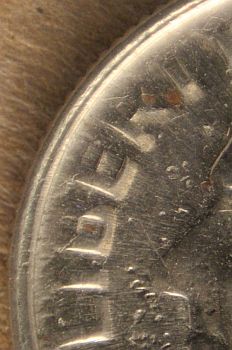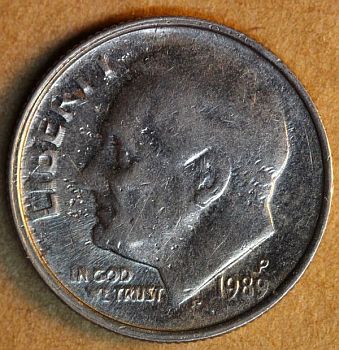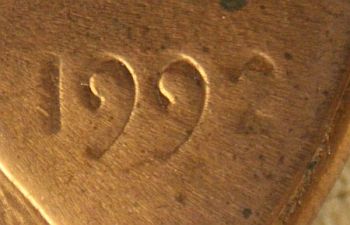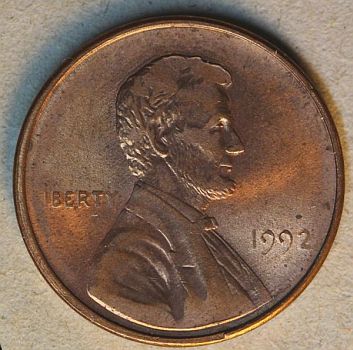Part VI. Striking Errors:
“Struck-through” errors:
Struck through die fill:
Grease strikes:
Grease-mediated radial smear
Definition: Radial smearing of the design caused by “grease” (die fill). The edges of the design that face toward the center of the coin are smeared toward the rim. Radial smearing can affect both interior and peripheral design elements. Although the mechanism is conjectural, the effect is likely caused by the interplay between viscosity, die convexity, and planchet expansion. It’s possible that as the die is pushing its way into the planchet it is also squeezing the grease outward. As the grease makes contact with metal that’s rising into the die’s recesses, it smears the metal outward in a radial fashion.
In rare cases, the direction of smear can be toward the center of the coin, or in both directions simultaneously.
Grease-mediated radial smear is similar in appearance to the metal flow that affects broadstrikes and off-center strikes and to a form of machine doubling called slide doubling. Although all produce a smearing effect, they are unrelated.
This 1989-P dime shows radial smearing of the peripheral design elements. The effect is best seen on LIBERTY. Note that the direction of smear is identical to the radial flow lines that developed in the field portion of the die as the result of die wear.
In this specimen, grease-mediated radial smear has affected the date and, to a lesser extent, LIBERTY. A close-up of the date shows the direction of smear. Once again, radial die flow lines follow the direction of smear.



